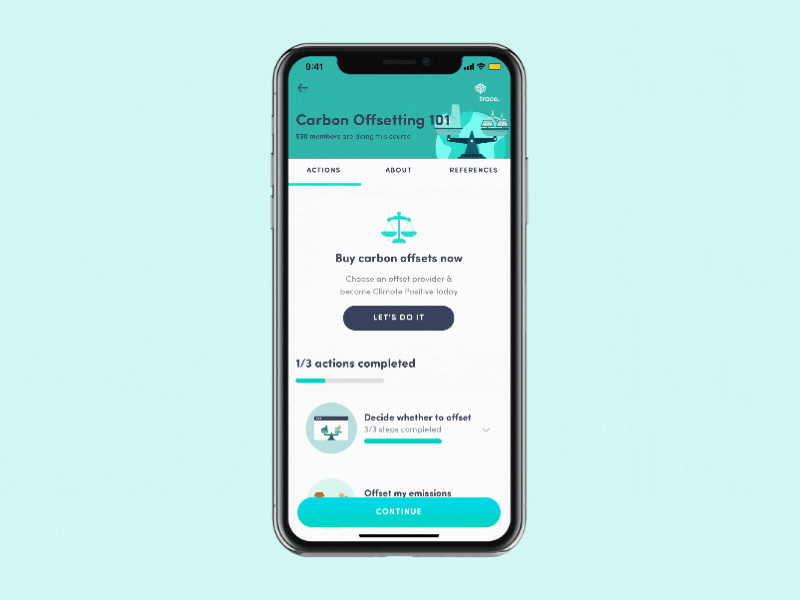
Ever wondered what carbon offsets are, and if they really make a difference?
We have less than a decade to reach ‘drawdown’ - the point in the future where levels of emissions in the atmosphere stop climbing and start to decline. By reaching drawdown before 2030, we’ll help prevent catastrophic climate change.
So can we actually get there? To reach drawdown, we need to use all of the tools and human power available to us.
Offsetting is one of the many tools in our collective climate action toolbox that we can use to rapidly decarbonise our economy and reach drawdown. This is because carbon offsetting enables us to compensate for unavoidable emissions we produce through our lifestyles, by funding climate projects that reduce emissions or remove greenhouse gasses from the atmosphere.
How does carbon offsetting work?
There are a huge variety of carbon offset projects, from reforestation to building renewable energy infrastructure. Some projects simply reduce emissions, but others have priceless social, economic and biodiversity benefits too!
When you fund these projects, you are purchasing the ‘carbon credits’ generated by them. These credits are a measurable and trackable way of compensating for your emissions.
1 carbon credit = 1 tonne CO2e.
So, which is the silver bullet: offsetting or behavior change?
Well, neither… And perhaps both! While there isn’t necessarily a ‘silver bullet’ when it comes to climate action, both behavior change and carbon offsetting play a key role in helping us to shift away from fossil fuels and prevent runaway global warming.
In fact, widespread behavior change can reduce global emissions by up to 5%. That’s double the impact of eliminating emissions from the entire aviation industry! Our personal choices around our waste, our buying habits, our investments, the energy we use and the food we eat have a direct impact on the decisions of those who have a big sway in decarbonising our economy: those who run businesses, utilities, buildings, and governments.
Additionally, offsetting helps by funding, and thereby supporting the expansion of, climate projects that reduce emissions or remove greenhouse gasses from the atmosphere.
Regardless of how much you offset, lifestyle changes will always be impactful. And no matter how many lifestyle changes you make, you’ll likely still have unavoidable emissions that can be compensated for through offsetting.
So, in short: it’s not an either / or proposition. If you have the means, the best option is to do both. Offset your emissions AND alter your behavior.
Should I reduce first and then offset?
Reducing your emissions through lifestyle changes is always preferable, and offsetting what you can’t reduce in the short-term is a valid ‘stop gap’ until you can make those big ticket changes to reduce emissions from your lifestyle.

We’ve put together a course which outlines the pros & cons of carbon offsetting, and how to find a truly effective carbon offsetting provider. Check out our free Carbon Offsetting 101 course to learn:
🌱 what carbon offsets are and why they make a difference
🌱 how to work out what is greenwashing vs what is genuinely effective
🌱 how to find truly impactful projects that deliver on what they promise
For your convenience, we’ve partnered with trace, one of the most effective carbon offsetting providers on the market. We’ve also added alternative recommendations so you can confidently decide which offsetting service is right for you.
Through this course you can choose to offset the emissions you can’t avoid, either with these partners or any of the alternatives we link to, while still making real and measured direct emission reductions wherever you can.
